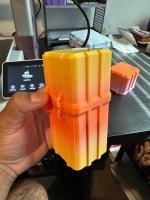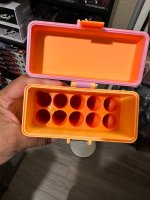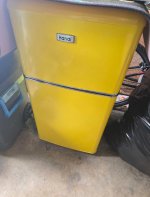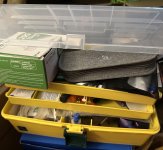You are using an out of date browser. It may not display this or other websites correctly.
You should upgrade or use an alternative browser.
You should upgrade or use an alternative browser.
Storage Case
- Thread starter elaine77
- Start date
I'm not sure if gpa is still selling on Etsy (or at all), and I've been away from things long enough to have no idea who the current go-to for cases, but hopefully there will be some good suggestions since cases don't seem to get near the attention and conversation that they used to!
exploitedworkerbee
Quiet Quitting Mod
Gpa is Tier3d on Etsy: https://www.etsy.com/shop/Tier3DPrinting
Whatever you do please don’t buy from “Vial Vault” on Etsy. I used to have a little 3d printing biz that was called Vial Vaults and that bastard decided to capitalize on my hard-earned reputation by stealing my name and selling garbage.
Whatever you do please don’t buy from “Vial Vault” on Etsy. I used to have a little 3d printing biz that was called Vial Vaults and that bastard decided to capitalize on my hard-earned reputation by stealing my name and selling garbage.
esdsafepoet
GLP-1 Apprentice
I have no idea what's recommended, but I had a Pelican 1120 on hand, so I pulled out most of the foam center, put a couple dessicant packs on either side, and put a couple 10 packs of vials in the middle, tossed it in the freezer. Theoretically seems like it should work fine.
Been reading on what to do to avoid condensation issues when taking it out, and seems like if I let it come to room temp for an hour or so before opening, that should help. I'm considering using a smaller secondary case to store maybe ~3 months worth so that I wouldn't have to open the 1120 as often.
Been reading on what to do to avoid condensation issues when taking it out, and seems like if I let it come to room temp for an hour or so before opening, that should help. I'm considering using a smaller secondary case to store maybe ~3 months worth so that I wouldn't have to open the 1120 as often.
raw_oyster_eater
lemon bottle brewer
144 count but all sizes are available in 3ml and 10ml and she's a member here infinitestarlet. https://form.jotform.com/251440988245160
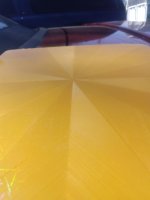

Last edited:
When you sent me what I won when I joined this forum it came in a smart lil case. I bet it was from gpa/Tier.I'm not sure if gpa is still selling on Etsy (or at all), and I've been away from things long enough to have no idea who the current go-to for cases, but hopefully there will be some good suggestions since cases don't seem to get near the attention and conversation that they used to!
Nope, that one was actually from Brute Enforcer Emeritus when he was still selling them. Oddly even though gpa is one of the few people who have my cell phone number I've never bought a case from him. 🤪When you sent me what I won when I joined this forum it came in a smart lil case. I bet it was from gpa/Tier.
FlowerFairy
GLP-1 Enthusiast
Peppy’s has nice things. So does Lemon and a gent called Rafi on Telegram. I’ll see if I can dig up some links..

 www.etsy.com
www.etsy.com
 www.sunnybox.studio
www.sunnybox.studio

LemonsGrove - Etsy
Shop Bringing zest to pepping, one Lemon Lid at a time. by LemonsGrove. Smooth shipping! Has a history of shipping on time with tracking. Speedy replies! Has a history of replying to messages quickly. Rave reviews! Average review rating is 4.8 or higher.
Home | Peppy’s Sunny Box Collective
Jolly Molly
Recently Joined
TooBigtoFail
GLP-1 Enthusiast
Amazon, Essential oil carrying case, for 3ml vials. Are held firmly in. Cheap, simple, and in multiple shape and sizes.
Iamnew2this
GLP-1 Specialist
I have 2-30 3ml vial storage containers. LayeredGenius3D on Etsy is where I get mine from. Prices are good and I'm satisfied.
nonyabizznez
GLP-1 Specialist
A lunchbox size ice pack fits in the mesh pocket nicely as well!Amazon, Essential oil carrying case, for 3ml vials. Are held firmly in. Cheap, simple, and in multiple shape and sizes.
But so pedestrian lol!Amazon, Essential oil carrying case, for 3ml vials. Are held firmly in. Cheap, simple, and in multiple shape and sizes.
I'm partial to the 3d printed cases, having bought quite a few from our resident 3d printing master 🐝 when he was still selling them including some very sweet custom ones. But yeah, ultimately whatever works for someone is just fine. I used to use 20ga shotgun shell cases for mine.
I forgot to ask you what you thought of that being a prize for being the 1000th member now we're over 8000!?!?When you sent me what I won when I joined this forum it came in a smart lil case. I bet it was from gpa/Tier.
FlowerFairy
GLP-1 Enthusiast
I love my 3-D printed stuff. Rafi spoils me. He modified my pen box to store my bird pen. I have another storage case in production now.
And they match my storage tacklebox and my refrigerator…
And they match my storage tacklebox and my refrigerator…
Attachments
Add up the cost of the cases you want and then consider that a good 3d printer like the A1 Mini can cost as little as $250. (Its print volume is a 7" cube so consider the sizes of the cases you want.)

 us.store.bambulab.com
us.store.bambulab.com
The A1, which can print a 10" cube, is $400.

 us.store.bambulab.com
us.store.bambulab.com
Printable files are freely shared.
A 5x5 vial case takes about 127 g of plastic filament, which costs about $1.40 assuming you get cheap PLA filament that's $11 per 1 kg spool including tax and shipping.
Fancy color-changing filament is more like $18-25 per 1 kg spool. So the box of your dreams in your favorite colors probably costs less than $5 to make.
(For most of these box designs you also need a couple of M3x30 or M3x20 screws, which are inexpensive.)
Or, here's the Hydrapeak vial holder.
If you are able to navigate the grey market and reconstitute peptides you can learn to use a modern reliable 3d printer. It is a super great household tool. I have printed several cases, and designed a little caddy for the 2 vial box so I have exactly the fridge storage I want.
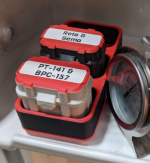

Bambu Lab A1 mini 3D Printer
Fully Automated, Multi-color Printing with AMS lite, Bed-slinger with CoreXY Speed, Bambu Lab latest 3D printer A1 mini makes 3D printing easier and better with cutting edge features and reliable performance.
The A1, which can print a 10" cube, is $400.

Bambu Lab A1 | Multi-color 3D Printer
Fully automated, Bambu Lab A1 with AMS lite shines as the best 3D printer for beginners, making multi-color 3d printing and multi-filament 3d printing accessible to EVERYONE!
Printable files are freely shared.
A 5x5 vial case takes about 127 g of plastic filament, which costs about $1.40 assuming you get cheap PLA filament that's $11 per 1 kg spool including tax and shipping.
Fancy color-changing filament is more like $18-25 per 1 kg spool. So the box of your dreams in your favorite colors probably costs less than $5 to make.
(For most of these box designs you also need a couple of M3x30 or M3x20 screws, which are inexpensive.)
Or, here's the Hydrapeak vial holder.
If you are able to navigate the grey market and reconstitute peptides you can learn to use a modern reliable 3d printer. It is a super great household tool. I have printed several cases, and designed a little caddy for the 2 vial box so I have exactly the fridge storage I want.

What's the learning curve on these 3D printers for someone that has so-so tech skills? Looks like it could be a nice new hobby.If you are able to navigate the grey market and reconstitute peptides you can learn to use a modern reliable 3d printer. It is a super great household tool. I have printed several cases, and designed a little caddy for the 2 vial box so I have exactly the fridge storage I want.
With a Bambu printer specifically, it is really easy to get going. Fans of other kinds of printers are gonna come scold me, but ... It really is true, Bambu has done a great job of making these devices easy to use and reliable. In my opinion, with the Bambu printers, we have hit the point where "so-so tech skills" are good enough.What's the learning curve on these 3D printers for someone that has so-so tech skills? Looks like it could be a nice new hobby.
Things will go wrong, there will be clogs and other failures that you need to figure out. But it is infrequent. I have only had very minor issues myself, in hundreds of hours of prints--and zero clogs/blobs. Anything that goes wrong will be covered by the official documentation, and there are forums for help too. Any parts you may need for an unlikely catastrophic event are pretty inexpensive too.
I guess that is another thing I should mention... Unless you live in a very dry climate, a spool of plastic will see degrading print quality if you let it sit out for weeks. Use it fast, and/or get an airtight storage box and put some desiccant beads inside. The Husky bins at Home Depot are ideal -- they seal tightly and are inexpensive for their size. The $30 20 gal bin will hold a LOT of filament spools, but they have smaller ones too. For desiccant, get about a pound of the cheapest silica or alumina beads you can find on Amazon, put them in a sock or mesh bag, and recharge them in the oven once a year or so.
Once you have gotten the hang of printing other peoples' designs, you can start to learn Fusion 360, it has a free tier that is very capable. You will soon be able to design your own simple objects for fixing things around the house. It's great.
Skidude
Illegitimi non carborundum
I bought this for my work station to store swabs, needles, BAC, etc..I forgot to ask you what you thought of that being a prize for being the 1000th member now we're over 8000!?!?

It would be cool to have a custom one that held 1 or 2 3ml and 1 or 2 10ml in one side and organization for swabs, needles in other with maybe space in middle.
Holy $hit! Thats amazing. As for the prize itself: Spectacular! Im still grateful every single week as Ive been going slowly thru it (still have 4 vials left I think).I forgot to ask you what you thought of that being a prize for being the 1000th member now we're over 8000!?!?
Now that is cool!I love my 3-D printed stuff. Rafi spoils me. He modified my pen box to store my bird pen. I have another storage case in production now.
And they match my storage tacklebox and my refrigerator…
RadicalCrimson
GLP-1 Apprentice
For the freezer this works fine, 50 slots stackable for less than $10:
I bought these on amazon. Cheap and does what I need.
Waterman
Recently Joined
I’ve been using these for my kits, keeps everything well organized and stacked
Attachments
The store is closed.Gpa is Tier3d on Etsy: https://www.etsy.com/shop/Tier3DPrinting
Whatever you do please don’t buy from “Vial Vault” on Etsy. I used to have a little 3d printing biz that was called Vial Vaults and that bastard decided to capitalize on my hard-earned reputation by stealing my name and selling garbage.
byefatlicia
GLP-1 Enthusiast
I've used this shop a few times with good results. Priced good and just a sweet person overall.Do we have a favorite case provider? I finally have enough vials to need a storage case and would like to spend at Etsy as opposed to a giant retailer. Any recs?
Bootlegbob
GLP-1 Novice
randompersonrandom
GLP-1 Enthusiast
Trending Topics
Members Online
- Calm Logic
- joedoemoe
- Labcat
- Chucky
- jafo111
- agala03
- Mikezig12
- Amino Lair
- BlueFlame
- Deepshred
- bass1120
- Lbstickz23
- Zoidberg
- x92534
- Charlie2025
- Mark A
- dndgeek
- Chili777
- Alice peptides
- Madclucks
- GaryC
- maximo
- elenacooke10
- Matt S
- MTWTF
- Jeffery
- HuskyShopper
- hawk1g
- thisladTim
- READY
- okendall
- Dave456
- Bellybutton
- Chamuquin
- SpecialTee
- UncrossSelector
- Autoshake
Total: 274 (39 Members & 235 Guests)



